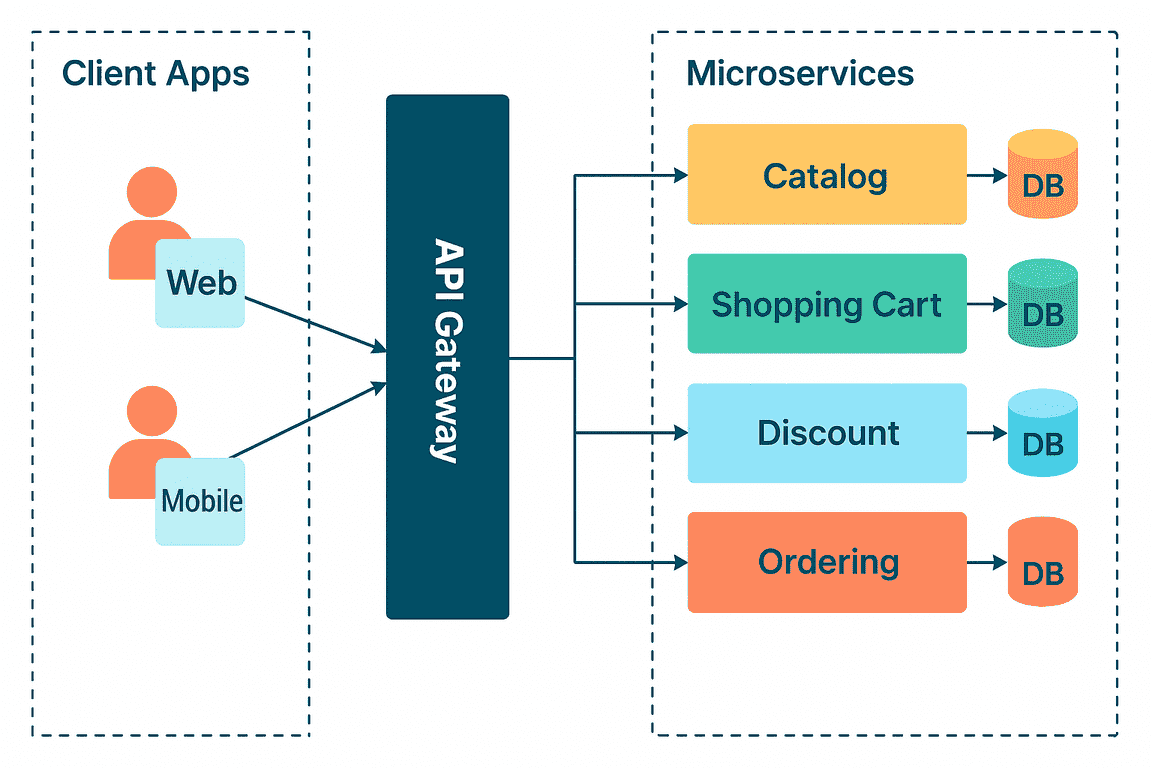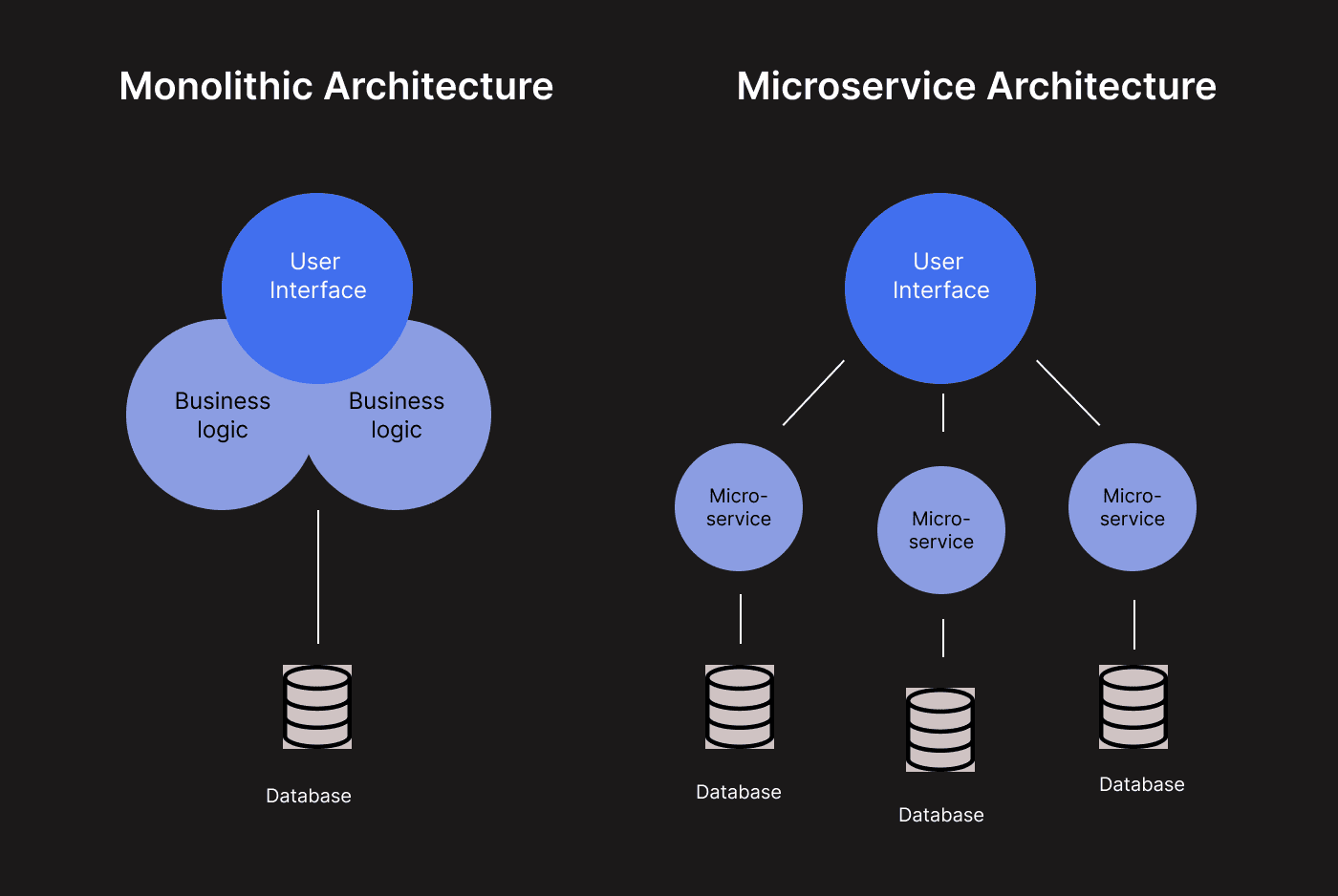One software development approach that has emerged as a game-changer is microservices architecture. But what exactly makes microservices so powerful?
In recent years, microservices have gained traction due to their ability to break down large applications into small, independent parts. This pattern offers many benefits, including scalability and flexibility. However, it also introduces new challenges, especially in terms of managing a large number of independent services.
This article explores what microservices are, how they compare to traditional monolithic architecture, and why adopting microservices, particularly with platforms like PipeOps, can significantly streamline system management and accelerate development cycles.
What Are Microservices?
Microservices are a software architectural style where an application is composed of many independently deployable, loosely coupled services. Each service is self-contained and can be developed, deployed, and scaled independently.
This stands in contrast to the monolithic architecture, where an entire application is built as a single, interconnected unit. All components are tightly coupled, sharing resources and data.
Microservices architecture brings modularity, flexibility, and resilience to application development. It’s an ideal foundation for cloud-native environments and DevOps practices. Modern cloud-native applications are typically built as microservices using containers.

Imagine an e-commerce application built with a monolithic architecture. A bug in the checkout module could take down the entire application, delaying sales and frustrating customers. With loosely coupled microservices, each module, such as search, cart, checkout, payments, and notifications, functions independently. If the checkout service fails, the rest of the app continues to operate, and the issue can be fixed and redeployed without affecting other modules.
Monolithic vs Microservice Architecture
Monolith vs microservices architecture is a central discussion in software development. All operations in a monolith environment are operated as a single service. This means that if any component experiences increased demand, the entire application must be scaled. As the codebase grows, it becomes increasingly difficult to add new features or enhance existing functionality due to the complexity and interdependencies within the system.

A microservices architecture structures an application as a collection of independent, decentralized modules, each responsible for a specific task. These services communicate with one another through lightweight APIs, using well-defined interfaces to ensure seamless interaction.
Let’s break down the primary differences between microservices and monolithic architecture:
| Feature | Monolithic Architecture | Microservices Architecture |
|---|---|---|
| Deployment | Entire app redeployed for changes | Individual services deployed independently |
| Scalability | Scales as a whole, even if only one part needs it | Each service can be scaled independently |
| Development Speed | Slower due to codebase size and complexity | Faster with smaller, focused teams |
| Fault Isolation | Failure in one module can affect the whole app | Involves more complexity since each service has to be tested independently |
Benefits of Using a Microservice Architecture
Now that we understand the distinction between monolithic vs microservices, let's explore the advantages of microservices that are driving their widespread adoption:
Improved Scalability
One of the most compelling benefits is granular scalability. If a specific feature, such as payment processing or user authentication, experiences high traffic, it can be scaled independently without affecting the rest of the system.
Faster Development and Deployment
Microservices allow for smaller, autonomous teams to own specific services. This enables faster development, continuous delivery, and more frequent updates, without the risk of breaking other parts of the application.
Resilience and Fault Isolation
In a monolithic architecture, a single point of failure can crash the entire system. With microservices, if one service fails, the rest of the application continues to function, significantly improving system resilience.
Technological Flexibility
Each microservice can use a different programming language, database, or framework, allowing teams to choose the right tool for the job. This flexibility boosts performance and efficiency.
When to Choose Microservices Architecture
While microservices architecture is powerful, it’s not a silver bullet. Consider adopting it when:
- Your application is large and expected to scale
- Multiple teams are working in parallel
- You need rapid deployment and experimentation
- Fault tolerance is critical
However, for smaller applications or minimum viable products (MVPs), a monolithic architecture may be more practical due to its simplicity and lower overhead.
The Challenges of Managing Microservices
Despite the numerous advantages, managing microservices comes with challenges. This includes:
- Operational complexity: In a microservice architecture, multiple services communicate with each other, making it difficult to manage. Each service has to be developed independently, so you have to handle the requests between them carefully. The method of communication needs to be explicitly defined while implementing best practices for security.
- Testing: Testing microservices architectures is often more complex than testing monolithic applications. Each service in a microservices architecture has its own dependencies and must be tested both individually and as part of the broader system. To ensure reliability, testing strategies such as resiliency testing and fault injection are essential for handling issues like network latency, database failures, caching problems, and service unavailability.
- Monitoring: Microservices demand robust monitoring requirements to effectively manage the entire infrastructure. Keeping track of logs, metrics, and health can be challenging due to the distributed nature of the system.
The Microservices Advantage with PipeOps
The transition from monolith to microservices can be transformative, enabling speed, scale, and agility. However, the shift also introduces complexity that requires the right tooling and practices to manage effectively.
PipeOps empowers teams to implement and manage microservices with automated deployments, intelligent monitoring, and efficient scaling. Whether you’re starting from scratch or migrating from a monolith, PipeOps accelerates your path to a resilient architecture. The platform features allow you to:
- Deploy from your repository to the cloud in a few clicks with pre-built CI/CD pipeline
- Bring your own cloud or run on PipeOps NOVA servers
- Access fast and secure builds with complete log visibility
- Collaborate with your team in segregated workspaces and much more.